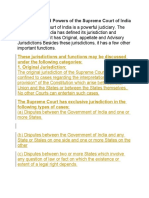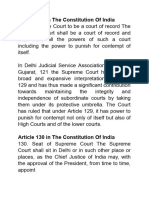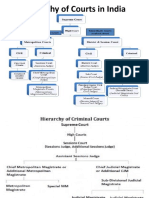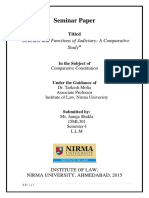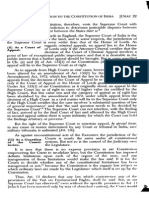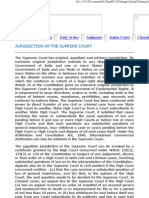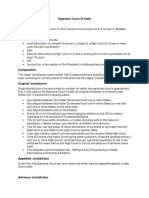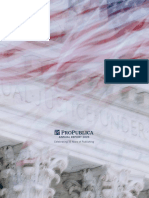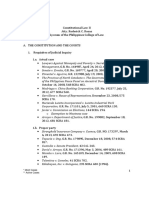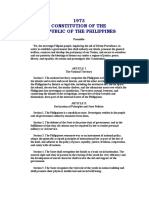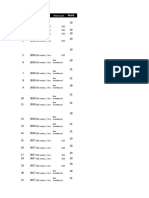0% found this document useful (0 votes)
14 views14 pagesUnit3 Consti Notes
The document discusses the jurisdiction and powers of the Supreme Court and High Courts in India, including their authority to issue writs and the process for transferring judges. It outlines the roles of the Speaker in legislative assemblies and the concept of contempt of court, emphasizing the Supreme Court's powers as a court of record. The document highlights the importance of these judicial mechanisms in upholding constitutional rights and maintaining the rule of law.
Uploaded by
www.dipthi4u.2002Copyright
© © All Rights Reserved
We take content rights seriously. If you suspect this is your content, claim it here.
Available Formats
Download as DOCX, PDF, TXT or read online on Scribd
0% found this document useful (0 votes)
14 views14 pagesUnit3 Consti Notes
The document discusses the jurisdiction and powers of the Supreme Court and High Courts in India, including their authority to issue writs and the process for transferring judges. It outlines the roles of the Speaker in legislative assemblies and the concept of contempt of court, emphasizing the Supreme Court's powers as a court of record. The document highlights the importance of these judicial mechanisms in upholding constitutional rights and maintaining the rule of law.
Uploaded by
www.dipthi4u.2002Copyright
© © All Rights Reserved
We take content rights seriously. If you suspect this is your content, claim it here.
Available Formats
Download as DOCX, PDF, TXT or read online on Scribd
/ 14
